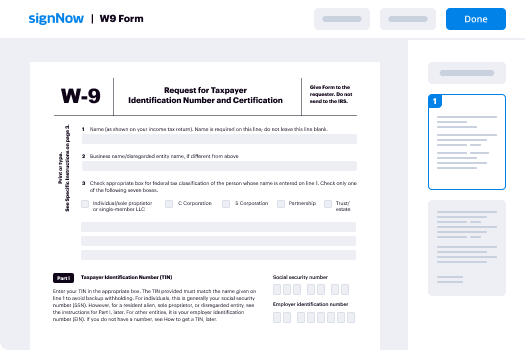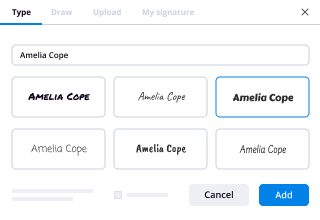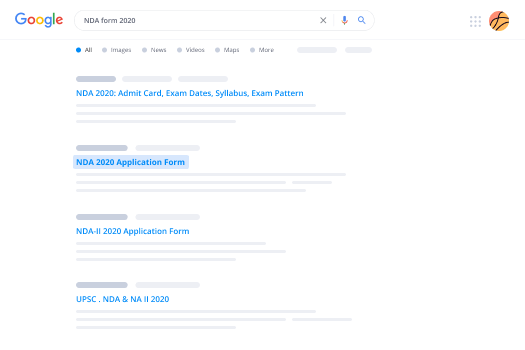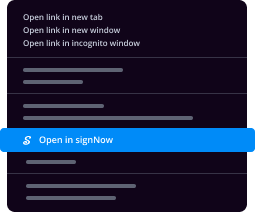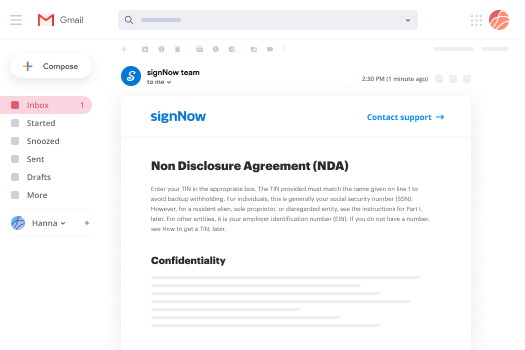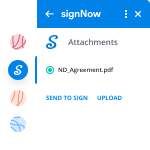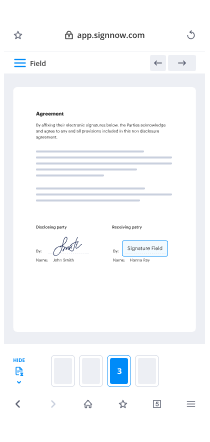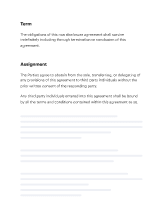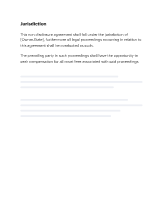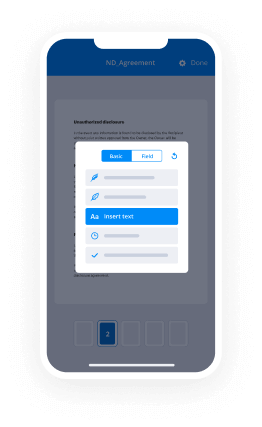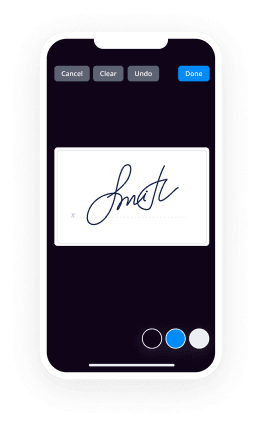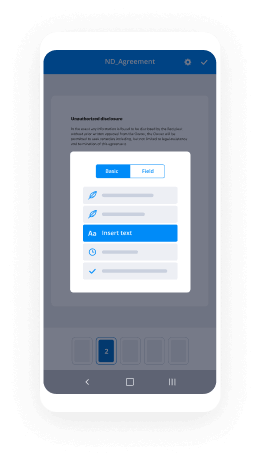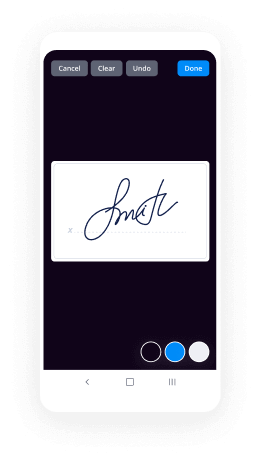Explore Your Digital Signature – Questions Answered: HIPAA Digital Signature Requirements
- Quick to start
- Easy-to-use
- 24/7 support
Simplified document journeys for small teams and individuals




We spread the word about digital transformation
Why choose airSlate SignNow
-
Free 7-day trial. Choose the plan you need and try it risk-free.
-
Honest pricing for full-featured plans. airSlate SignNow offers subscription plans with no overages or hidden fees at renewal.
-
Enterprise-grade security. airSlate SignNow helps you comply with global security standards.







Quick guide on how to use HIPAA digital signature requirements feature
Is your organization ready to reduce inefficiencies by three-quarters or higher? With airSlate SignNow eSignature, weeks of contract negotiation become days, and hours of signature gathering become minutes. You won't need to learn everything from scratch due to the clear interface and easy-to-follow guides.
Take the following steps below to use the HIPAA digital signature requirements functionality in minutes:
- Open your browser and access signnow.com.
- Sign up for a free trial or log in utilizing your electronic mail or Google/Facebook credentials.
- Click User Avatar -> My Account at the top-right corner of the page.
- Modify your User Profile with your personal information and changing settings.
- Make and manage your Default Signature(s).
- Get back to the dashboard page.
- Hover over the Upload and Create button and choose the needed option.
- Click the Prepare and Send key next to the document's name.
- Input the name and email address of all signers in the pop-up box that opens.
- Make use of the Start adding fields menu to begin to modify document and self sign them.
- Click on SAVE AND INVITE when completed.
- Continue to customize your eSignature workflow using more features.
It can't be simpler to use the HIPAA digital signature requirements feature. It's accessible on your smartphones as well. Install the airSlate SignNow app for iOS or Android and run your custom eSignature workflows even when on the move. Put away printing and scanning, time-consuming submitting, and costly papers delivery.
How it works
Rate your experience
What are the HIPAA digital signature requirements?
The HIPAA digital signature requirements ensure that electronic signatures used in healthcare comply with the Health Insurance Portability and Accountability Act (HIPAA). These requirements focus on maintaining the privacy and security of sensitive patient information during electronic transactions. A valid digital signature must include elements such as authentication, integrity, and non-repudiation, ensuring that the signer is who they claim to be and that the document has not been altered after signing. It is essential for healthcare providers to understand these requirements to protect patient data and comply with federal regulations.
How to use the HIPAA digital signature requirements
To effectively use the HIPAA digital signature requirements, organizations must implement a secure electronic signature solution that meets compliance standards. This includes selecting a platform that offers strong encryption, user authentication, and audit trails. Users can fill out documents online, apply their eSignature, and securely share completed forms. It is crucial to ensure that all parties involved in the signing process are trained on the importance of HIPAA compliance and the proper use of digital signatures to safeguard patient information.
Steps to complete the HIPAA digital signature requirements
Completing the HIPAA digital signature requirements involves several key steps:
- Choose a compliant eSignature solution that adheres to HIPAA regulations.
- Prepare the document for signing by ensuring all necessary fields are included.
- Send the document for signature to the intended recipients.
- Each signer should authenticate their identity, typically through a secure login or multi-factor authentication.
- Once signed, the document should be saved securely, maintaining an audit trail for compliance purposes.
Legal use of the HIPAA digital signature requirements
Legal use of the HIPAA digital signature requirements involves understanding the framework set forth by the law. Electronic signatures are legally binding under the Electronic Signatures in Global and National Commerce (ESIGN) Act, provided they meet specific criteria. Organizations must ensure that their digital signature processes comply with both HIPAA and ESIGN regulations. This includes maintaining confidentiality, ensuring data integrity, and having a clear process for obtaining consent from patients before using their electronic signatures.
Security & Compliance Guidelines
Adhering to security and compliance guidelines is critical when implementing HIPAA digital signatures. Organizations should ensure that their eSignature solution includes:
- Data encryption to protect sensitive information during transmission and storage.
- Access controls to limit who can view and sign documents.
- Audit trails that track all actions taken on the document, including who signed and when.
- Regular security assessments to identify and mitigate potential vulnerabilities.
Examples of using the HIPAA digital signature requirements
Examples of using HIPAA digital signature requirements can be found in various healthcare scenarios. For instance, a healthcare provider may use digital signatures to obtain patient consent for treatment or to sign off on electronic health records (EHRs). Additionally, insurance companies may require digital signatures for claims processing or policy agreements. These examples demonstrate how HIPAA-compliant eSignatures streamline workflows while maintaining the necessary security and privacy standards.
-
Best ROI. Our customers achieve an average 7x ROI within the first six months.
-
Scales with your use cases. From SMBs to mid-market, airSlate SignNow delivers results for businesses of all sizes.
-
Intuitive UI and API. Sign and send documents from your apps in minutes.
FAQs
-
What are the HIPAA digital signature requirements for healthcare providers?
HIPAA digital signature requirements mandate that electronic signatures must be secure, verifiable, and compliant with federal regulations. Healthcare providers must ensure that their digital signature solutions, like airSlate SignNow, meet these standards to protect patient information and maintain confidentiality.
-
How does airSlate SignNow ensure compliance with HIPAA digital signature requirements?
airSlate SignNow complies with HIPAA digital signature requirements by implementing robust security measures, including encryption and secure access controls. Our platform also provides audit trails and user authentication to ensure that all signed documents are legally binding and secure.
-
What features does airSlate SignNow offer to meet HIPAA digital signature requirements?
airSlate SignNow offers features such as secure document storage, customizable workflows, and multi-factor authentication, all designed to meet HIPAA digital signature requirements. These features help ensure that your documents are signed securely and efficiently, while maintaining compliance.
-
Is airSlate SignNow a cost-effective solution for HIPAA-compliant digital signatures?
Yes, airSlate SignNow is a cost-effective solution for businesses needing HIPAA-compliant digital signatures. Our pricing plans are designed to accommodate various business sizes, ensuring that you can access essential features without breaking the bank while meeting HIPAA digital signature requirements.
-
Can airSlate SignNow integrate with other software to support HIPAA digital signature requirements?
Absolutely! airSlate SignNow integrates seamlessly with various software applications, enhancing your workflow while ensuring compliance with HIPAA digital signature requirements. This allows you to streamline processes and maintain secure document handling across platforms.
-
What benefits does airSlate SignNow provide for businesses needing HIPAA digital signature solutions?
airSlate SignNow offers numerous benefits for businesses needing HIPAA digital signature solutions, including increased efficiency, reduced paper usage, and enhanced security. By utilizing our platform, you can ensure compliance with HIPAA digital signature requirements while improving overall productivity.
-
How can I get started with airSlate SignNow to meet HIPAA digital signature requirements?
Getting started with airSlate SignNow is easy! Simply sign up for a free trial on our website, and you can begin exploring our features designed to meet HIPAA digital signature requirements. Our user-friendly interface will guide you through the process of sending and signing documents securely.
airSlate SignNow features for HIPAA digital signature requirements
Related searches to hipaa digital signature requirements
Join over 28 million airSlate SignNow users
Get more for hipaa digital signature requirements
- Ensuring Digital Signature Lawfulness for Business ...
- Digital signature lawfulness for Business purchase ...
- Ensuring the Legal Validity of Business Agreements with ...
- Understanding the Business Purchase Agreement ...
- Ensuring Digital Signature Lawfulness for Business ...
- Ensuring Digital Signature Lawfulness for Business ...
- Ensuring Compliance with Digital Signature Lawfulness ...
- Digital Signature Lawfulness for Business Purchase ...





























